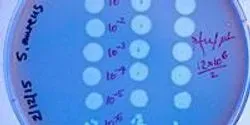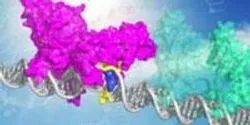DNA

Five University of Guelph discoveries are being recognized as life-changing breakthroughs by the Council of Ontario Universities (COU).

A pair of genetics researchers at Iowa State University found striking patterns in the building blocks of DNA in a wide variety of species, according to their recently published paper.

UCLA researchers devise new method to identify disease markers, a key step toward personalized medicine.

New, block-by-block assembly method could pave way for applications in opto-electronics, drug delivery.

Bacteria may not have brains, but they do have memories, at least when it comes to viruses that attack them. Many bacteria have a molecular immune system which allows these microbes to capture and retain pieces of viral DNA that they have encountered in the past, in order to recognize and destroy it when it shows up again.

Sites where DNA is damaged may cause a molecule that slides along the DNA strand to scan for damage to slow on its patrol, delaying it long enough to recognize and initiate repair. The finding suggests that the delay itself may be the key that allows the protein molecule to find its target, according to researchers at the University of Illinois at Chicago.

Ribonucleotides, units of RNA, can become embedded in genomic DNA during processes such as DNA replication and repair, affecting the stability of the genome by contributing to DNA fragility and mutability. Scientists have known about the presence of ribonucleotides in DNA, but until now had not been able to determine exactly what they are and where they are located in the DNA sequences.












